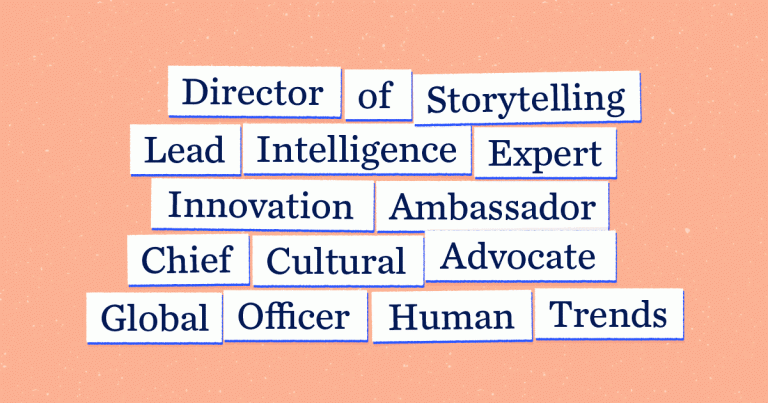Brand agency Alto share their insights on content marketing. With so much content out there is content marketing worth the effort? Is content still king? Let’s take a closer look.
Bill Gates famously declared way back in 1996 that ‘Content is king’. Over twenty years later, we’re drowning in the stuff. Is it still king? Or is content marketing just filler, flooding our inboxes, newsfeeds and lives? Here’s what we have learned from adding to the daily torrent.
A simpler time.
Way back in the mid 90’s when Bill Gates was predicting the future of information, our house only had two real sources of information:
The first: our mum, who had the answer for every question ever and what she didn’t know she would make up.
The second: our family collection of World Book Encyclopedias which met their soggy demise one fateful morning when we woke to a dry fish tank and gasping goldfish, while on the shelf below sat our gilded but bloated collection of all the world’s knowledge, never to be plagiarised for high-school projects again. #endofhistory
Otherwise, it was onto the bike and off to the library. You really had to work to find the answer you were looking for back then in the dark ages.
So much information, so little time.
Now finding an answer—or an expert—is about as easy to get as fish and chips used to be back then.
We can find an answer (true or fake news) to any question we might have within seconds. We can find out whatever we want, whenever we want it, to support whatever way of thinking suits our view on the world. There’s really something for everyone.
This unlimited access to knowledge has made us information crazy. To feed our insatiable appetite for information, content marketing has become the go-to tool to connect and stay in touch with your market by constantly feeding them—or filling them up—with content.
From a marketing perspective, it makes good sense. What better way to demonstrate your expertise—your thought leadership—by sharing your knowledge with the world, while also creating a pile of SEO-friendly words, making you and your brand more findable?
It seems to be working—as content consumers we’re lapping it up. There is so much good quality content out there that makes our work and lives easier, that we now find ourselves constantly scrolling through endless newsfeeds, signing up to newsletters we’ll never get time to open (let alone read), or sharing articles that we didn’t read beyond the third paragraph— thanks if you made it this far ; ) —and podcasts we’ll never listen to.
Too much of a good thing?
However, the downside is that we’re so spoiled for choice and inundated with options that it sometimes feels like we’re drowning in information, or one of my favourite expressions, drinking from a firehose.
So does content marketing work? As a content consumer, when will we get to saturation point and turn off? If so, as a content creator, is it worth all the effort?
Sharing news and views with our community.
As a part of our repositioning strategy we made the commitment to talk more about what we do, how we do it, why we do it and who we do it for.
We had never created content for our brand before—the main reason being that we didn’t know what we would say or who we were talking to. Our approach in the past was to be anything to anyone, but after having sharpened our focus on our specialist market—the education and knowledge sector—it became much clearer what would be valuable for us to share with our community.
Our intent has been to bring a different perspective, to be useful, challenging, insightful, honest, and hopefully a little bit entertaining.
Here’s what we’ve learned along the way.
It’s not easy. It takes time.
Writing is tough. It takes lots of time. “I feel like I’m just spinning my wheels” is a common refrain in the studio from whoever is tasked with writing our monthly essay. Our deadline of the second Tuesday of the month often gets bumped a week or two. #thestruggleisreal
However, as communication specialists, half of our job is word-wrangling so the commitment to write often sharpens our game. A win for us, a win for our clients.
You can’t outsource what’s in your head.
We’ve had plenty of people ask who has been doing our content marketing for us—who is actually writing the stuff. For better or worse, it’s actually us.
We’ve found that the process of taking what is intuitive or innate over our years of working in the industry and putting it down on paper, has enabled us to better distil and share our internal processes with our team, clients and the wider community. Wins all round.
You can’t fake it.
Unfortunately, I’ve never been good at bullsh*t. To this day I still think of the time I stood up in a university debate to rebut the opposition’s comments on a topic I knew nothing about, squeezed a sentence out, and sat right back down again embarrassed and defeated.
That was the last time I was underprepared or tried to weigh in on something I knew nothing about. No fake news here.
Content is not king, content is filler.
You’ve probably heard the saying ‘content is king’. But is it really?
If we take the literal meaning of the word content—‘the things that are held or included in something’—it doesn’t really point to any inherent value in content itself. Beanbags have content. Belly buttons have content. Hot dogs have content too, whatever that may be. #mysterymeat
I’m not here to argue the semantics. When we talk about content we mean information that is useful and valuable for the reader and writer. It must be words worth sharing. It takes too long and too much effort to just create filler.
Content strategy – A simple rule for creating valuable content.
So where to start? There’s a simple rule of thumb for creating valuable content worth sharing—the T.H.I.N.K principle—taught to me by my primary school kids as a guide to conversations in the classroom.
It goes a little something like this:
T — Is it True?
Don’t bullsh*t. Don’t spread fake news.
H — Is it Helpful?
Will it add value to someone’s life, or just chew up precious time and bandwidth?
I — Is it Interesting?
Does anyone actually need or want to hear about this?
N — Is it Necessary?
Are you talking for the sake of talking? The world doesn’t need more hotdogs.
K — Is it Kind?
We’ve seen plenty of examples of people being antagonistic for the sake of being antagonistic. What did Mum say about “if you haven’t got anything nice to say…”
Maybe she does have all the answers after all.
Learning to swim.
Adding to the daily torrent of content in our newsfeeds can sometimes feel like throwing a paper boat into a fast-moving river. You get that exciting rapid rush of opens and engagements before it slowly but surely gets drowned out and sinks to the murky depths. If we were only in it for the rush, the novelty would wear off pretty quickly.
However, what we learn from the process—the thinking and the doing—has had a much more lasting effect, clarifying and solidifying who we are, what we do and how we do it.
We’re still relatively new to it and learning with every post, but so far it’s worth the effort.


